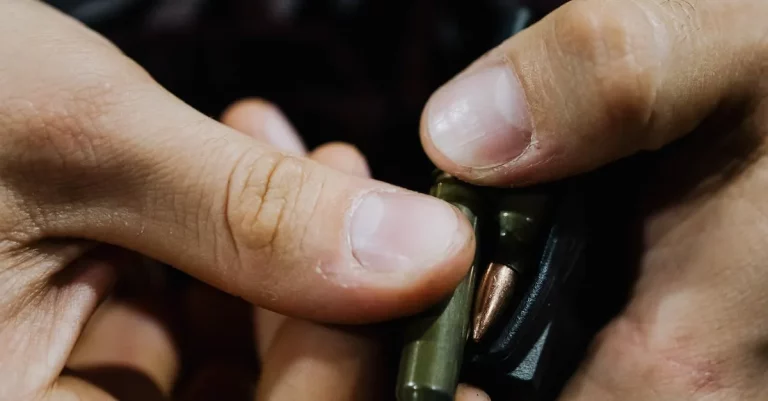Where To Sign On A Texas Vehicle Title
Whether you just purchased a new car or are transferring ownership, signing the title properly is a key step. But where exactly should you sign on a Texas vehicle title form? This guide will walk through the title signing process to ensure it’s done correctly.
If you’re short on time, here’s the quick answer: For Texas titles, all sellers must sign on the ‘Seller’s Signature’ line and all buyers sign on the ‘Purchaser’s Signature’ line. Sign with ink in the middle of the designated signature areas.
Overview of Texas Title Signing
When it comes to buying or selling a vehicle in Texas, understanding the process of signing the vehicle title is crucial. The title serves as a legal document that proves ownership of the vehicle, and it is important to ensure that it is properly signed to avoid any complications in the future.
This article provides an overview of the Texas title signing process, including the purpose of vehicle title signatures, who needs to sign the title, and when to sign it when transferring ownership.
Purpose of Vehicle Title Signatures
The signatures on a Texas vehicle title play a vital role in establishing the transfer of ownership from one party to another. When a vehicle is sold or transferred, the signatures on the title act as a confirmation that the seller is relinquishing their ownership rights and transferring them to the buyer.
This is essential for legal purposes, as it helps protect both parties involved in the transaction and ensures that the transfer of ownership is properly documented.
Who Needs to Sign the Title
When it comes to signing the vehicle title in Texas, it is important to know who needs to sign the document. Generally, all owners listed on the title are required to sign when selling or transferring ownership of the vehicle. If the vehicle is jointly owned, then all owners must sign the title.
However, if one of the owners is unable to sign, there are specific procedures that need to be followed, such as obtaining a power of attorney or obtaining a court order.
Signing When Transferring Ownership
When transferring ownership of a vehicle in Texas, it is important to follow the proper procedure for signing the title. The seller should sign the title on the designated line for the seller’s signature. Additionally, the buyer should sign the title on the line designated for the buyer’s signature.
It is important to ensure that the signatures are clear, legible, and match the names listed on the title. Once the title is signed, it should be delivered to the buyer, who can then proceed with registering the vehicle in their name.
It is worth mentioning that the process of signing a vehicle title may vary depending on the specific circumstances of the transaction. It is always recommended to consult the official Texas Department of Motor Vehicles website for the most up-to-date information and guidelines regarding the signing of vehicle titles in Texas.
They provide detailed instructions and resources to ensure a smooth and legally compliant transfer of ownership.
Where the Seller Should Sign
When it comes to selling a vehicle in Texas, it’s important to know where the seller should sign on the vehicle title. The seller’s signature is a crucial step in transferring ownership and ensuring a smooth transaction. Here are the key details you need to know:
Locating the seller’s signature line
On the Texas vehicle title, you will find the seller’s signature line located on the back of the document. Look for a section that is specifically designated for the seller’s signature. It is typically labeled as “Seller’s Signature” or “Seller’s Signature and Date.”
Once you have located the seller’s signature line, make sure to carefully read any instructions or additional requirements provided. This will help ensure that you sign in the correct location and provide any necessary information.
Seller signature requirements
When signing as a seller on a Texas vehicle title, there are a few important requirements to keep in mind:
- 1. Signature consistency: The seller’s signature on the vehicle title should match the name listed as the seller on the front of the document. It’s important to sign your legal name as it appears on official identification documents.
- 2. Date: Along with the signature, the seller should also provide the date of the sale. This helps establish the timeline of ownership transfer.
- 3. Notarization: While not mandatory, it is highly recommended to have the seller’s signature notarized. Notarization adds an extra layer of authentication to the document and can help prevent any potential issues in the future.
For more detailed information and specific guidelines, it is always a good idea to consult the official Texas Department of Motor Vehicles website at www.txdmv.gov. They provide comprehensive resources and step-by-step instructions to ensure that you complete the vehicle title transfer process correctly.
Where the Buyer Should Sign
When it comes to signing a Texas vehicle title, it is important for the buyer to know where exactly they should sign. This ensures that the transfer of ownership is done correctly and legally. There are two key aspects to consider: locating the buyer’s signature line and understanding buyer signature requirements.
Locating the buyer’s signature line
The buyer’s signature line can typically be found on the back of the Texas vehicle title. It is essential to carefully read the instructions and locate the specific area designated for the buyer’s signature.
This is usually indicated by a bolded or highlighted line, clearly labeled as “Buyer’s Signature.”
It’s important to note that the location of the buyer’s signature line may vary slightly depending on the specific type of Texas vehicle title. For example, if you are dealing with a salvage or rebuilt vehicle title, the buyer’s signature line might be in a different position or have additional requirements.
Therefore, it is crucial to thoroughly review the instructions provided on the title document.
Buyer signature requirements
When signing the Texas vehicle title, the buyer must ensure that they meet all the necessary requirements. These requirements include:
- Printed name: The buyer should print their full legal name on the designated line. This helps to ensure clarity and avoid any confusion regarding the buyer’s identity.
- Date: The buyer should also include the date of the transaction on the title. This is important for record-keeping purposes and serves as a reference point for when the ownership transfer occurred.
- Signature: The buyer’s signature should match the printed name provided. It is crucial to sign the title exactly as it appears on the printed name line. Any discrepancies may result in complications during the transfer process.
Remember, signing the Texas vehicle title correctly is crucial to ensure a smooth and legal transfer of ownership. If you have any doubts or questions about where to sign, it is advisable to consult the Texas Department of Motor Vehicles (DMV) website at www.txdmv.gov or reach out to your local DMV office for guidance.
They will provide you with the most up-to-date and accurate information regarding the signing process.
Other Important Signature Details
Using ink signatures
When it comes to signing a Texas vehicle title, using ink signatures is crucial. Electronic signatures or digital signatures are not accepted for this purpose. It is important to use a pen with black or blue ink to ensure the signature is clear and legible.
This helps prevent any confusion or issues when transferring ownership of the vehicle.
Avoiding common mistakes
When signing on a Texas vehicle title, it is important to avoid common mistakes that could invalidate the document. One common mistake is not signing in the appropriate section. Each section on the title requires a specific signature, such as the seller’s signature, the buyer’s signature, or the signature of a lienholder.
Another common mistake is not signing with the correct name. It is important to sign the title using the name that matches the legal ownership documents of the vehicle. Using a nickname or a different variation of your name could cause issues during the transfer of ownership.
Additionally, it is important to ensure that all signatures are consistent throughout the title. Inconsistencies in signatures can lead to confusion or delays in processing the title transfer.
One way to avoid these mistakes is to carefully read the instructions provided on the Texas vehicle title. The instructions will guide you through the process and provide specific details on where to sign and how to sign.
Pro tip: If you are unsure about the signing process or have any questions, it is always a good idea to consult with the Texas Department of Motor Vehicles or visit their official website for more information.
They have valuable resources and guidelines to help you navigate through the signing process correctly.
After Signing the Texas Title
Once you have signed the Texas vehicle title, there are a few important steps you need to take to ensure a smooth transfer of ownership and registration.
Submitting the title transfer
After signing the Texas vehicle title, you will need to submit the title transfer documents to the Texas Department of Motor Vehicles (DMV). This can be done either in person or by mail, depending on your preference and convenience.
Note: It is recommended to keep a copy of the signed title and any other relevant documents for your records.
Updated registration and plates
Once the title transfer has been processed by the DMV, you will need to update the registration and obtain new license plates for the vehicle. This can typically be done at your local county tax office.
Pro tip: Before heading to the county tax office, it is advisable to check their website or call ahead to ensure you have all the necessary documents and fees required for the registration and plate update process.
Remember, the process of transferring ownership and updating registration may vary slightly depending on your specific situation and the county in which you reside. Therefore, it is always a good idea to consult the official Texas DMV website for the most accurate and up-to-date information.
Conclusion
Signing the title properly is essential when buying or selling a vehicle in Texas. Sellers must sign on the designated ‘Seller’s Signature’ line and buyers sign on the ‘Purchaser’s Signature’ line. Use ink, sign legibly inside the boxes and avoid any mistakes. Once all parties have signed, the title can be submitted along with other required paperwork to transfer ownership officially. With a few simple steps, you can ensure your Texas vehicle title is signed correctly.








